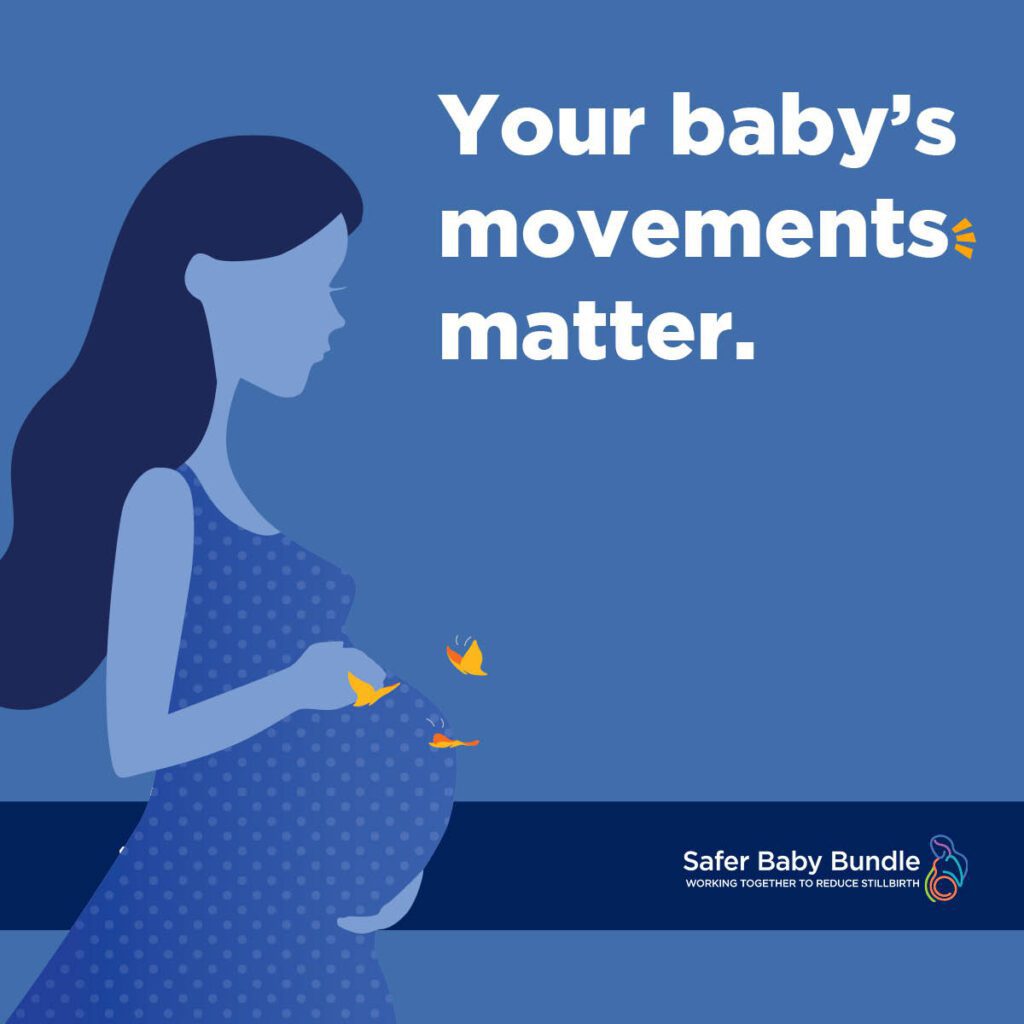
Movements really do matter. Are you aware of your baby’s movements during pregnancy? Do you know what to do if you notice a change in your baby’s movements that concerns you?
Being aware of your baby’s movements during pregnancy is one of the simplest things you can do to help keep your baby safe and healthy. Regular and healthy movements are a good sign of wellbeing. It is a myth that babies’ movements slow down or become weaker towards the end of pregnancy.
Your baby's movements are one of the signs that your baby can give you that they are well. Getting to know the pattern of your baby's movements is important - it is a way your baby can tell you that they are well. There is no set number of normal movements. You should get to know your baby's movements and what is normal for them. You will start to feel your baby move between weeks 16 and 24 of pregnancy, regardless of where your placenta lies, and you should feel your baby's movements right up until they are born, even during labour.
A baby's movements can be described as anything from a flutter or a kick, to a swish or a roll and these are signs that baby is well. When a baby is unwell, he or she may try to save energy by slowing down their movements. This may be the first sign of a problem. If you are concerned about a change in your baby's movements, contact your midwife or doctor immediately. You are not wasting their time.
It's important that this information be shared with partners, family and friends so that they too can understand the importance of fetal movements.
If you would like to get to know your baby’s movements better or if you are unsure if your baby’s movements have changed, the following the steps are provided as a guide. The guide is based on clinical practice guidelines (1). Please remember if you are concerned about your baby’s movement the best thing to do is to contact you midwife or doctor without delay.
1. Gardener G, Daly L, Bowring V, Burton G, Chadha Y, Ellwood D, Frøen F, Gordon A, Heazell A, McDonald S, Mahomed K, Norman JE, Oats J, Flenady V. Clinical practice guideline for the care of women with decreased fetal movements. Centre of Research Excellence in Stillbirth. Brisbane, Australia, August 2017.
If at any point you are concerned about your baby’s movements, please contact your doctor or midwife. It is very common for pregnant women to have concerns about their baby at some point in their pregnancy. It is part of the natural role of a mother or mother-to-be to do things to look after your baby and your midwife or doctor is there to help you, no matter what time of night or day.
Please don’t feel silly about contacting your doctor of midwife if you want to. And remember that no one knows your baby better than you do. It’s your body and your baby, so trust your instincts.
If you have contacted your doctor or midwife and your doctor or midwife suggests that you come in to hospital, there are a few things that you can expect to happen.
First, your doctor or midwife will likely ask you questions about any known risk factors or issues you might have had during pregnancy. Then he or she may do a CTG (cardiotocograph)1. This will involve placing an elastic belt around your belly to measure your baby’s heart rate. Your doctor or midwife will also feel your belly to see where your baby is positioned and to check his or her growth.
After this, your doctor or midwife might do an ultrasound of your baby if this has not been done recently (1). You may have had an ultrasound scan in early pregnancy to work out your gestation. Ultrasound scans can also be used to measure your baby’s heart rate and blood flow, and to check on growth.
Your doctor or midwife may also do a blood test.
For some suggestions of questions you may like to ask your care providers, see the below ‘Suggested questions for my care provider’.
1. Gardener G, Daly L, Bowring V, Burton G, Chadha Y, Ellwood D, Frøen F, Gordon A, Heazell A, McDonald S, Mahomed K, Norman JE, Oats J, Flenady V. Clinical practice guideline for the care of women with decreased fetal movements. Centre of Research Excellence in Stillbirth. Brisbane, Australia, August 2017.
Suggested questions for my care provider at any time
Suggested questions for my care provider if I am concerned about my baby’s movements
Tommy’s has developed a guide to baby movements in partnership with NHS England on baby's movements in pregnancy.